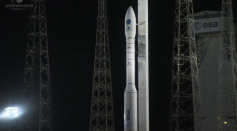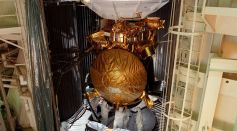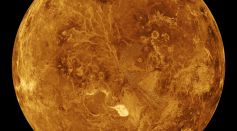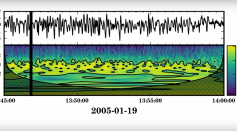Tags: European Space Agency

12 New Quadruple Quasars Could Reveal Universe’s Rate of Expansion

ESA Seeks More Female And Persons With Disability Astronauts
Warning World's Aging Dams Are 'Ticking Time Bombs'
NASA Found Sunspot Opening on the Surface of the Sun Which Could Spark Solar Flare

ESA Shares Stunning New Video Showing Solar Orbiter's View of Mars, Earth and Venus
Solar Orbiter Spacecraft Reaches Nearest Approach to Venus
European Vega Rocket Suffers Major Anomaly During Launch of European Earth Observation Satellites

Space Telescope Ariel: Europe Moves Ahead With Exoplanet Mission

Signs of Water Bodies in Mars' South Pole Suggest Life
Belgian Nanosatellite Carries Finland's Remote Sensing Technology To Space

Vega Rocket Returns To Service, Carries 53 Satellites To Orbit

Astronauts Train to Explore Lava Tubes on the Moon and Mars
Watch! Latest Flyover Footage From ESA’s Spacecraft Shows Stunning View of Ice-Filled Crater of Mars

Engineers from the European Space Agency Solves the Huygens Probe Mistery

Ultraviolet Aurora, Among the Discoveries From Cassini's Final Data

New Study Identifies Tipping Point in Deforestation, Human Factors at the Forefront of Changes in Landscape

Researchers Confirm Volcanic Activity in Venus Through Light Emissions

Earth's Magnetic Field Produces Music During a Solar Storm
Report on Mars Probe Crash: Wild Rotation Crushed Schiaparelli Upon Landing
Milky Way Future After 5 Million Years Revealed By Video
Most Popular

Avi Loeb Claims 3I/ATLAS May Be Made of Antimatter—'The Most Efficient Fuel'

Earthquakes, Volcanoes, and Plate Tectonics Explained

The Biggest Unanswered Questions in Science (That Still Baffle Researchers)

How the Greenhouse Effect Really Works (And Why It Matters)




